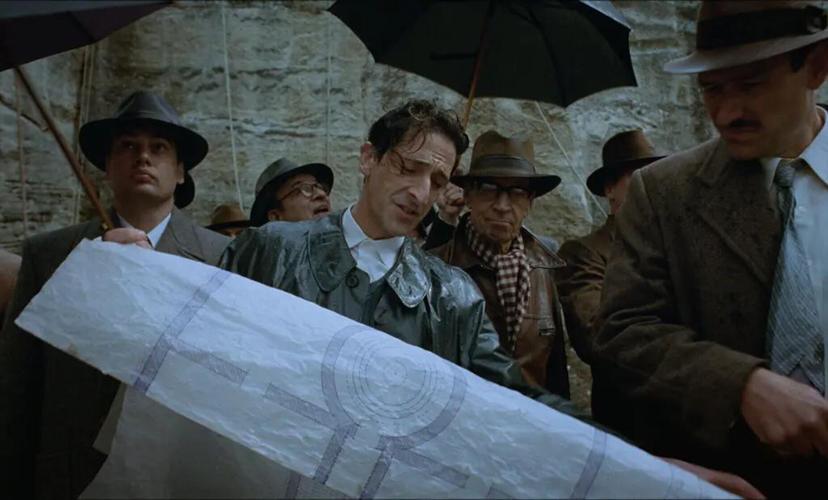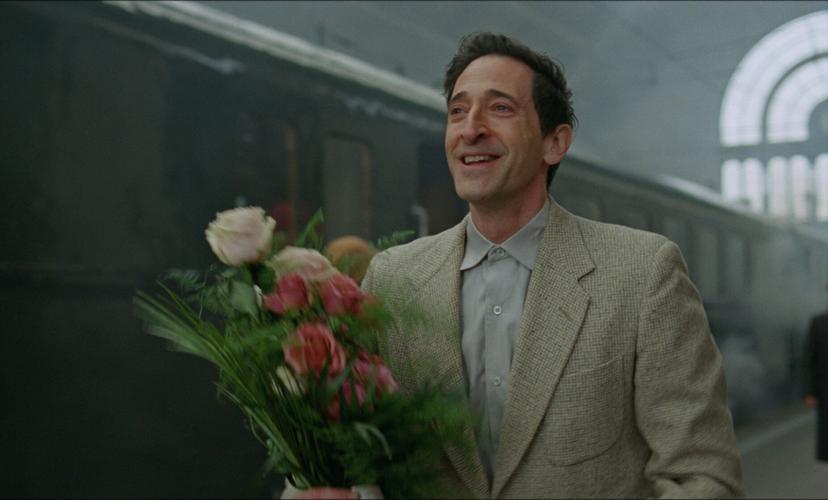Itãs fitting that Adrien Brody had the longest acceptance speech at this yearãs Academy Awards.
His film, ãThe Brutalist,ã was the yearãs longest film, too, clocking in at nearly four hours.
While that may have been a bit too much for filmgoers, it should be more palatable now that the filmãs on DVD. Complete with intermission (which could be your stopping point for a day), itãs like binging a miniseries.

Adrien Brody plays an architect who reshapes his life when he moves to the United States in "The Brutalist."ô
Telling the storyô of architect Lazlo Toth (Brody) from his days in Europe to his new life in America, ãThe Brutalistã sends a touching message about working smarter, not harder.
Director Brady Corbet finds creative ways to capture the times, the people, the moments. He doesnãt just throw money at sets, costumes and special effects, he unearths unique ways to make the moments resonate.
People are also reading…
While itãs one of the rare films today with an intermission, ãThe Brutalistã deserves it, giving us a moment to consider what weãve seen. The story follows Toth as he reinvents his life, first as a refugee, then, as a laborer.
How he makes it in a tough new world is only part of the journey. Family teaches him how he needs to behave and, quickly, heãs able to channel his design sense through a cousinãs furniture store. He butts up against relatives and others, then meets an industrialist (Guy Pearce) who is as brusque as anyone in the new country. When Look magazine raves about Tothãs work, the benefactor changes course and hires the quiet man to build a community center that challenges the architectãs skills.
Pearce is wonderful as the man who commissions someone else to give him vision. Today, those ãmoneyã men think theyãre the ones with the ideas; here, he openly cedes the reins and Toth delivers.

"The Brutalist" is a top contender for the best picture Oscar, and Adrien Brody is potentially unbeatable in the lead actor category.
As Corbet covers the building process, we see the change in Toth, particularly when it means he can bring his family to the United States. He throws himself into the work (not unlike a composer with a deadline looming) and, in the process, educates others on various schools of design.
When Pearceãs Harrison Lee Van Buren Sr. insists on a chapel, Toth doesnãt resist but gives him something no one could have imagined. The imagery, alone, says something about his talent.
Because theyãre worried about their fatherãs infatuation with the project (and the money itãs sucking away) Van Burenãs son (Joe Alwyn) and daughter (Stacy Martin) offer resistance. The son worries what this might mean for him and looks for his own way of controlling the situation.
Corbet, however, doesnãt just chronicle the creation of a masterpiece. He shows the work and negotiation that goes into its completion. Like the Medicis in Italy, the Van Burens want more than control.
In the filmãs second half, Tothãs family arrives and presents another wrinkle ã one that isnãt necessarily handled with a T-square and a hammer.
Corbet manages to weave plenty of political, social and religious upheaval throughout ãThe Brutalistã (which refers to his architectural style) but never insists you buy into his theories. This is very much one manãs journey (not unlike Vito Corleoneãs), influenced by the situations he encounters in life.

Guy Pearce plays an industrialist who funds Laszlo Toth's projects in "The Brutalist."ô
Brody is remarkable throughout the stages of Tothãs life. He conjures all the emotions and emerges with a full-bodied performance that makes you feel like you stood next to a man during the good and bad times.
Felicity Jones is affecting, too, as his wife but she has another agenda, one informed by the distance that separated them.
When the architect manages to produce what his benefactor wants ã ãsomething new,ã as he puts it ã we can feel the sense of accomplishment.
Like Toth, Corbet has created something monumental ã a piece of cinema that didnãt need hundreds of millions to produce, just a little ingenuity.













